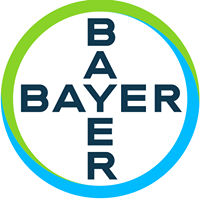Request Demo
Last update 08 May 2025
α-glucosidase x MGAM x GANC
Last update 08 May 2025
Basic Info
Related Targets |
Related
2
Drugs associated with α-glucosidase x MGAM x GANCMechanism GANC inhibitors [+2] |
Active Org. |
Originator Org. |
Active Indication |
Inactive Indication- |
Drug Highest PhaseApproved |
First Approval Ctry. / Loc. Japan |
First Approval Date01 Jul 1994 |
Mechanism Alpha amylases inhibitors [+3] |
Active Org. |
Originator Org. |
Active Indication |
Inactive Indication |
Drug Highest PhaseApproved |
First Approval Ctry. / Loc. Germany |
First Approval Date01 Jan 1990 |
214
Clinical Trials associated with α-glucosidase x MGAM x GANCNCT05487859
A Pilot Study of the Immunomodulatory Agent Acarbose in Combination with Standard Therapy in Metastatic Renal Cell Carcinoma (RCC)
The purpose of this study is to determine the safety and tolerability of acarbose in combination of immunotherapy based standard of care therapy in advanced renal cell carcinoma patients.
Start Date31 Dec 2025 |
Sponsor / Collaborator |
CTR20244876
阿卡波糖片健康人体生物等效性试验
[Translation] Bioequivalence study of acarbose tablets in healthy volunteers
主要研究目的 研究受试制剂阿卡波糖片(规格:0.1g,生产厂家:北京双鹭药业股份有限公司)和参比制剂阿卡波糖片(商品名:拜唐苹®,规格:0.1g,持证商为拜耳医药保健有限公司)在健康受试者空腹状态下单剂量给药时的药效动力学特征,评价两制剂的人体生物等效性。 次要研究目的 观察受试制剂阿卡波糖片和参比制剂拜唐苹®在健康受试者中的安全性。
[Translation]
The main purpose of the study is to study the pharmacodynamic characteristics of the test preparation acarbose tablets (specification: 0.1g, manufacturer: Beijing Shuanglu Pharmaceutical Co., Ltd.) and the reference preparation acarbose tablets (trade name: Baytangping®, specification: 0.1g, licensee is Bayer Pharmaceuticals Co., Ltd.) when administered as a single dose to healthy subjects in the fasting state, and to evaluate the bioequivalence of the two preparations in humans. The secondary purpose of the study is to observe the safety of the test preparation acarbose tablets and the reference preparation Baytangping® in healthy subjects.
Start Date10 Feb 2025 |
Sponsor / Collaborator |
CTR20244400
伏格列波糖口崩片在中国健康受试者中单次口服给药的一项单中心、随机、开放、两制剂、两序列生物等效性试验
[Translation] A single-center, randomized, open-label, two-formulation, two-sequence bioequivalence study of voglibose orodisintegrating tablets in healthy Chinese subjects after single oral administration
以口服蔗糖产生的体内葡萄糖动力学为对照组,在中国健康受试者中考察单次口服3片由山东朗诺制药有限公司提供的伏格列波糖口崩片(受试制剂T,规格:0.2mg)或单次口服3片由Teva Takeda Yakuhin Ltd.持证的伏格列波糖口崩片(参比制剂R,商品名:Basen®,规格:0.2mg)与蔗糖后产生的体内葡萄糖药动学的变化。以两种伏格列波糖制剂对葡萄糖动力学影响作为药效学指标,评价两制剂间的生物等效性。
[Translation]
The in vivo glucose pharmacokinetics produced by oral administration of sucrose was used as the control group to investigate the changes in the in vivo glucose pharmacokinetics produced by oral administration of 3 tablets of voglibose orodisintegrating tablets (test preparation T, specification: 0.2 mg) provided by Shandong Langnuo Pharmaceutical Co., Ltd. or 3 tablets of voglibose orodisintegrating tablets (reference preparation R, trade name: Basen®, specification: 0.2 mg) certified by Teva Takeda Yakuhin Ltd. and sucrose in healthy Chinese subjects. The effects of the two voglibose preparations on glucose kinetics were used as pharmacodynamic indicators to evaluate the bioequivalence between the two preparations.
Start Date17 Dec 2024 |
Sponsor / Collaborator |
100 Clinical Results associated with α-glucosidase x MGAM x GANC
Login to view more data
100 Translational Medicine associated with α-glucosidase x MGAM x GANC
Login to view more data
0 Patents (Medical) associated with α-glucosidase x MGAM x GANC
Login to view more data
2
Literatures (Medical) associated with α-glucosidase x MGAM x GANC01 Feb 2020·Gene
The in silico characterization of neutral alpha-glucosidase C (GANC) and its evolution from GANAB
Article
Author: Gabriško, Marek
24 May 2016·Proceedings of the National Academy of SciencesQ1 · CROSS-FIELD
Taste cell-expressed α-glucosidase enzymes contribute to gustatory responses to disaccharides
Q1 · CROSS-FIELD
Article
Author: Nichols, Buford L. ; Margolskee, Robert F. ; Shigemura, Noriatsu ; Quezada-Calvillo, Roberto ; Ninomiya, Yuzo ; Yee, Karen K. ; Pinto, B. Mario ; Iwata, Shusuke ; Kotha, Ramana ; Sukumaran, Sunil K. ; Mohan, Sankar
Analysis
Perform a panoramic analysis of this field.
login
or

AI Agents Built for Biopharma Breakthroughs
Accelerate discovery. Empower decisions. Transform outcomes.
Get started for free today!
Accelerate Strategic R&D decision making with Synapse, PatSnap’s AI-powered Connected Innovation Intelligence Platform Built for Life Sciences Professionals.
Start your data trial now!
Synapse data is also accessible to external entities via APIs or data packages. Empower better decisions with the latest in pharmaceutical intelligence.
Bio
Bio Sequences Search & Analysis
Sign up for free
Chemical
Chemical Structures Search & Analysis
Sign up for free





